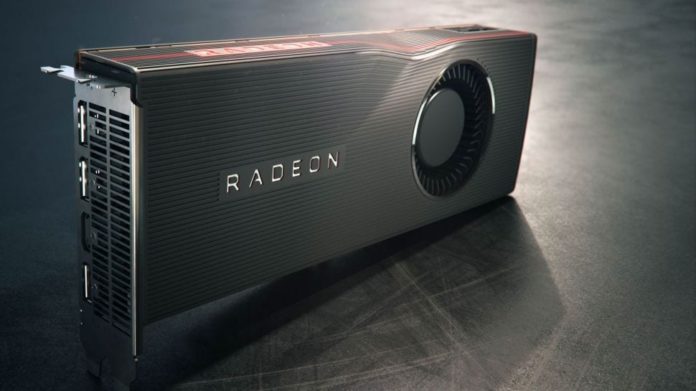One of the good things about AMD hardware is that the company won’t restrict you from overclocking it to the absolute limit. All the Ryzen chips come with an unlocked multiplier, unlike the Intel parts where only the K variants can be properly overclocked. The same can be said for the Radeon GPUs, you can unlock the power cap, the voltages as well as the base and boost clocks. Back in the days of Maxwell and Kepler, this used to be possible with NVIDIA cards as well, but now the company has made it almost impossible on most models. Modders used similar BIOS tweaks to boost the Vega 56 past NVIDIA’s much more expensive GeForce RTX 2070, and now they’ve done it again with the RX 5700 XT, putting it right next to the RTX 2080.
Igor from TomsHardware Germany managed to push the voltage of the 5700 XT to 1.25v (from 1.20) and the power draw by 32W, allowing for a boost clock of 2.2GHz, up from 1.9GHz. That’s an impressive 300MHz, but keep in mind that this test was conducted using water cooling and long-term usage can potentially damage your hardware.

Let’s have a look at the benchmark. The stock Radeon RX 5700 XT yields 116 FPS on an average in Tomb Raider, right below the RTX 2070 Super. On fully unlocking the power and voltage caps, the card boosts to 2.2GHz, resulting in an average FPS of 129. This is one frame less than the RTX 2080 and 13 FPS faster than the stock 5700 XT. Even the overclocked 2070 Super isn’t able to match it (after pushing the power limit).
On average, the RX 5700 XT when overclocked is 10FPS than faster than the RTX 2070 Super running at factory clocks. Not bad at all considering that the Navi GPU is $100 cheaper than the 2070 S.

Let’s have a look at the power consumption. As already explained in earlier posts, the Navi cards break NVIDIA’s leadership in efficiency, drawing almost the same amount of power as their Turing competitors. Even after overclocking and increasing the voltage and removing the TDP cap, the card only draws 250W max.
This is something AMD probably knew about, and as such, the third-party cards should be notably faster than the reference Navi GPUs. We should see a bunch of those “Extreme Edition” variants in August. NVIDIA however, seems unmoved and as of now, we haven’t heard of any potential price drops. Let’s see how this plays out.
If you found this story interesting, follow us on Facebook and Instagram.
Further Reading:



$50 cheaper? It’s $100 cheaper